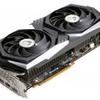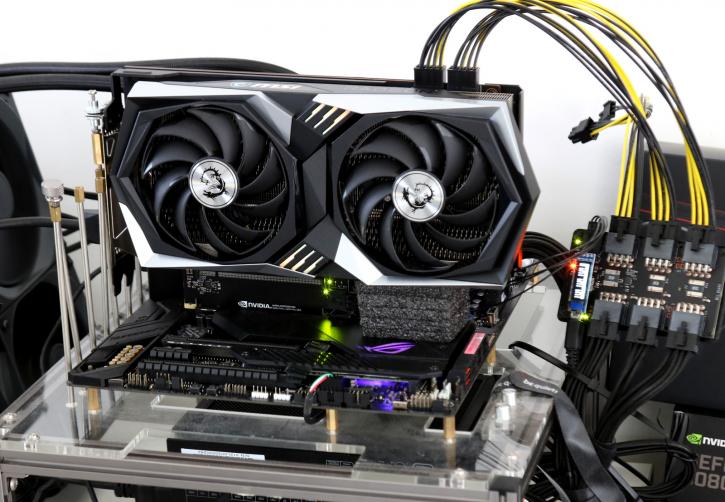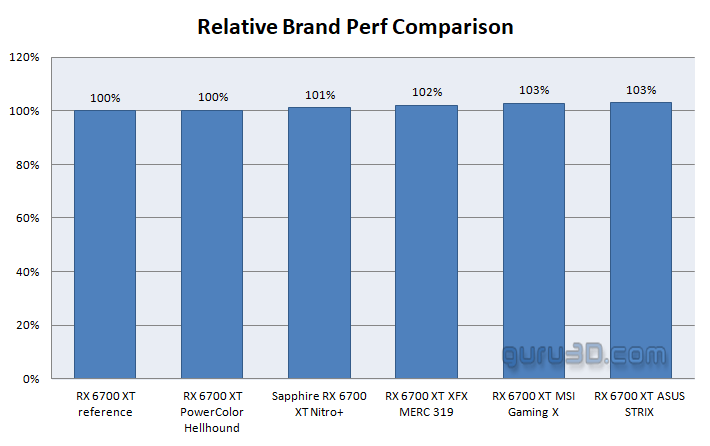Final words and conclusion
Final words
Overall the Radeon RX 6700 XT is a funky little card in that WQHD (2560x1440) resolution domain for gaming, however, very expensive. In the past two years, we've seen incredible price hikes where mainstream series graphics cards have been repositioned as high-end once, with accompanying price levels. NVIDIA has started that trend, and where AMD always had a little more value to offer, this year that tide has turned. It might be so that the reference RX 6700 XT sits close to RTX 3060 Ti and sometimes 3070 performance, but only in shading performance. Raytracing performance is just quite a bunch slower than the competition offers. I can also not apprehend that AMD still has not implemented any form of machine learning super-sampling, dedicated in hardware much like NVIDIA offers Tensor cores. For these two reasons (RT perf and lacking MLAA) we cast doubt as to why AMD is trying to justify a price of 479 USD as really the true competitor here is the RTX 3060 Ti with its 399 USD MSRP. NVIDIA introduced its Tensor cores back in the summer of 2018 (!). You can also argue that while the Infinity cache works most of the time, it's designed to be a workaround to fill a flaw in the choice of memory type (GDDR6 opposed to GDDR6X), the current AMD GPUs are memory bandwidth deprived, even with GDDR6 at 16 Gbps, but especially running over a 192-bit wide memory bus.
So what am I trying to say here? Well, of course, you can opt for a different route in architecture, dismiss MLSS/DLSS, the somewhat lackluster Raytracing performance, and limited memory bandwidth, really that's fine up to a certain point. But what you then cannot do is price your product like it has all that. Performance overall from the rasterizer/shading point of view in that WQHD domain is lovely, make no mistake .. but again that staring price of 479 USD folks ... for a graphics card aimed at the WQHD resolution domain?
Smart Acces memory
A recent ability that AMD made available and a method that is now passing onwards to intel and NVIDIA as well is SAM. Smart Access memory it is able to boost your framerates a bit further, sometimes significantly sometimes a little, sometimes not at all. SAM requires that CSM Support is turned off in the BIOS in order to enable the above 4G Decode, which will allow Resizable Bar Support (SAM) to be enabled. The problem here is that if your Windows installation is configured as non-UEFI, Windows will be unable to boot from your currently installed SSD/HDD. Most PCs will be configured like that. The only solution is to disable CSM, and reinstall Windows 10 to get this feature-set supported, or perform some really advanced trickery. That said, SAM is not yet 100% stable, especially swapping out cards with another one and cards that don't support SAM, can end up in black screens. The only solution then is the clear CMOS and start configuring from scratch. As such for now we'll be collecting SAM results, however, publish them separately on a dedicated page in the article.
Performance spread reference and AIBs
We've been quite busy the past week or so as we have lined up six Radeon RX 6700 XT reviews, actually seven but we're still awaiting a Gigabyte sample. So from top to bottom the differences certainly are not huge, have a peek:
So the chart above is arbitrary in the sense that results can deffer a single % here and there, less so in fillrate limited situation, more so in GPU bound situations. But from reference to the fastest AIB cards, you're looking at 3 to 4% differentials (depending on game and resolution).
Cooling & acoustic
MSI has a properly performing cooling design. Expect 65 to 70 Degrees C game load ranges depending on the internal airflow inside your chassis. Acoustics wise the product remains pretty silent, however, TwiNF ROZR 8 is reaching the 37~38 DBa marker, and that mainly is due to the measured 230W power design. It's silent enough though. Our FLIR imaging shows the card is hardly bleeding heat. Overall, we're very comfortable with what we observe.
Energy
Heat output and energy consumption are closely related to each other, as (graphics) processors and heat can be perceived as a 1:1 state; 250 Watts in energy consumption approaches close to 250 Watts in heat as output. This is the basis of TDP. AMD is listing the card at 230W, which is okay at best for a graphics card in the year 2021. We measure the entire power consumption of the card spot on close in at 230 Watt with minor spikes towards 260W.
Coil whine
Compared to the reference Radeon RX 6700 XT the MSI card exhibit far less coil squeal. It's at a level you can hardly hear it. In a closed chassis, that noise would fade away in the background. However, with an open chassis, you can hear coil whine/squeal. Graphics cards all make this in some form, especially at higher framerates; this can be perceived.
Pricing
Likely nauseating. However, MSI was not willing to tag the product with an MSRP, meaning it can be anything.
Tweaking
The Radeon RX 6700 XT series is limited to that 192-bit wide memory bus. It thus likes more memory bandwidth. You can add it by dialing up the memory frequency towards 17.2 Gbps, AMD enforces limits on the memory subsystem, limiting your GDDR6 memory that maximum overclock. We don't like that as we feel we could have gone a notch further. The clock frequency reach is spectacular, after selecting 2900 MHz the GPU was settling at ~2800 MHz due to the power limiters you'll have gained a handsome 8% additional performance.
Conclusion
The base design of the Radeon RX 6700 XT is done right, MSI added to that a more advanced PCB design, component selection as well as a more beefy cooler. That recipe is working well bringing you a product that is 3 to 4% faster than reference depending on monitor resolution and game. You'll retrieve a nice performing product in that WQHD range at very acceptable temperatures and acoustic levels. Aesthetically the card looks fine as well, a bit bulky perhaps. We do feel that MSI needs to step away from the silver-colored elements on the cooling shroud though. As stated it's a lovely Full HD, and Quad HD card with abilities at Ultra HD as well. Raytracing performance on this generation RDNA2 card is okay and will allow you to fool around with ti a bit. Of course, AMD lacks something DLSS, bigtime. All that could be forgiven if the product was priced right, and it isn't. We think the card as tested will cost somewhere in the 550 USD marker, and while we can recommend the card itself up-to 2560x1440 gaming, we cannot justify the irrational price level.
Since MSI was not willing to share an MSRP, we'll cannot objectively hand out an award to the product.
Sign up to receive a notification when we publish a new article.
Or go back to Guru3D's front page
- Hilbert, LOAD"*",8,1.



